Article 39: The most striking observation is that in the mid-20th century, humanity’s effect on the Earth crossed a tipping point. This happened when post-World War II production and consumption slipped into the overdrive.
In the following text we continue the summary of an article, authored by Owen Gaffney of the Stockholm Resilience Centre.
…The most striking conclusion from the graphs (mentioned in the previous contribution and shown in the article by Paul Salopek, Walking the Anthropocene, Out of Eden Walk) is that in the mid-20th century, humanity’s effect on the Earth crossed a tipping point. This is when post-World War II production and consumption slipped into overdrive, and we, the producers and consumers, moved onto a new, almost exponential trajectory, fueled by the use of Earth’s natural resources. Incredibly, in a single human lifetime, changes in major planetary indicators started moving almost in synchronicity with social and economic indicators of change, one force seemingly driving the other.
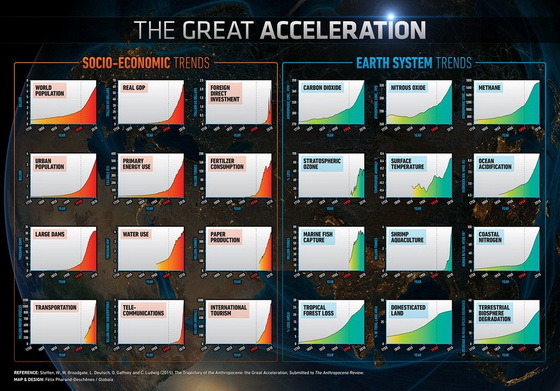
Now, we are in a whole new world. From this perspective, the most significant event in the 20th century was not the Great Depression, the World Wars or the Cold War, but rather the moment that a single species, ours, came to dominate Earth’s natural cycles.
Today we use an area the size of South America to grow our crops and an area the size of Africa to graze our livestock. We move more sediment and rock annually than all natural processes combined. And we are in the midst of Earth’s sixth mass extinction, a result of human activity.
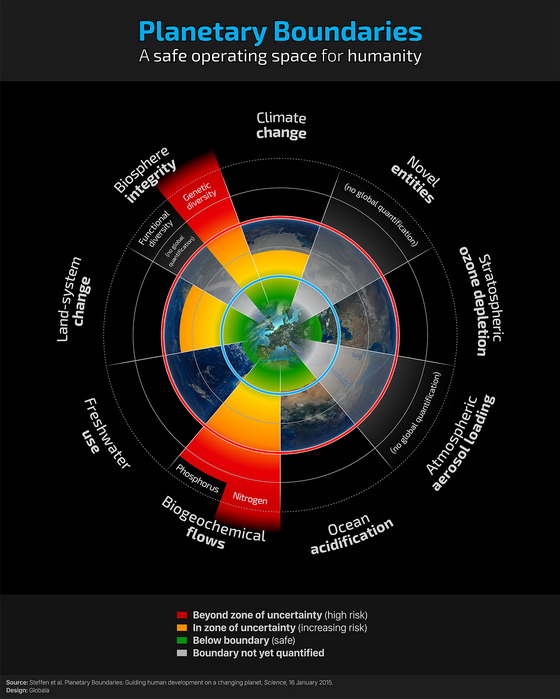
Experts from around the world assert that the profound impact humans are having on earth systems warrants the recognition of a new geological epoch, the Anthropocene.
So, will future geologists regard 1950 as the boundary between Holocene and Anthropocene? Crutzen has changed his mind about 1800 and now favors around 1950 and so do many other researchers, because since 1950 the graphs show a great acceleration.
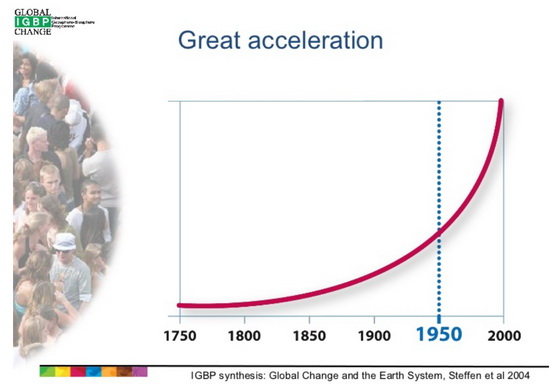
They show a great acceleration in 12 Socio-economic trends:
(1) world population, (2) urban population, (3) real GDP (Gross Domestic Product is a measure of the size of an economy), (4) foreign direct investment, (5) primary energy use, (6) large dams, (7) water use, (8) paper production, (9) fertilizer consumption, (10) transportation, (11) telecommunications and (12) international tourism.
They also show a great acceleration in 12 Earth system trends:
(1) carbon dioxide, (2) methane, (3) nitrous oxide, (4) surface temperature, (5) stratospheric ozone, (6) marine fish capture, (7) ocean acidification, (8) coastal nitrogen, (9) shrimp aquaculture, (10) tropical forest loss, (11) domesticated land and (12) terrestrial biosphere degradation.
The International Commission on Stratigraphy, ICS, the scientific body that decides what “time” it is, geologically speaking, has set up a working group to sift the evidence for the Anthropocene. The group met for the first time in Berlin and is due to report its conclusions in 2016. Yet several members of the working group have already published academic papers, indicating that Earth-system evidence points towards around 1950 as the beginning of a new geological epoch.
Geologists assessing claims of new eras, ages, and epochs search out unmistakable signatures to inform their decisions. Rock created at the time of the extinction of the dinosaurs, 65 million years ago, contains an extraordinary spike in the amount of the metal iridium, for example, indicating that an asteroid rich in that very rare element struck the Earth and sent a cloud of iridium dust all over the world. Geologists call these signatures “golden spikes” and sometimes even erect a plaque to mark a spot.
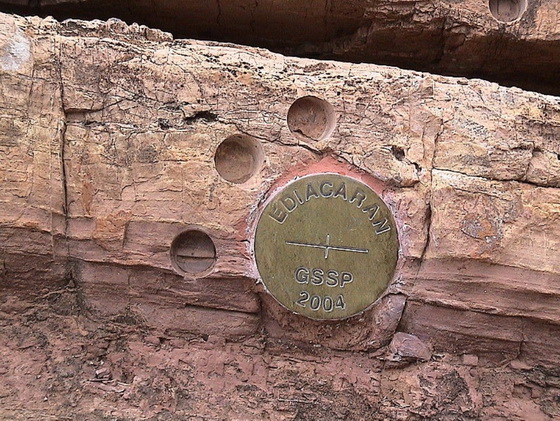
Golden spikes are used by geologists to define major geological time boundaries and large changes in Earth’s biota, such as the Ediacaran Biota dated around 635 million to 542 million years ago
The Anthropocene will have many such markers. The imprint of our concrete and steel cities will be ‘forever’ embedded in the rocks. So too will the record of mass extinctions and the altered chemistry of Earth’s atmosphere and oceans. But there might be an even more compelling marker in the strata. On July 16, 1945, the Manhattan Project reached its goal when U.S scientists detonated the first atomic bomb in the desert of New Mexico. On that exact date, radioactive isotopes entered the atmosphere and they will forever remain in the sedimentary record, like the layer of iridium, an unmistakable marker for future geologists.
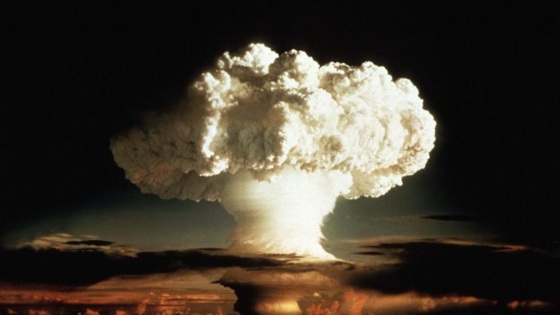
16 milliseconds after the beginning of the Anthropocene: The Trinity nuclear test. Credit: Los Alamos National Laboratory
Formal acceptance of the Anthropocene concept by geologists could have far-reaching cultural, political, economic and legal implications.
Homo sapiens, the sometimes-wise ape, has traveled far, but we did not travel together, nor did we take the same route. But we’re all in the same boat now.
Thanks to Paul Salopek, Out of Eden Walk, Walking the Anthropocene
 Shanti is a regular contributor
Shanti is a regular contributor
All essays of this series can be found in: At Home in the Universe
All articles by this author on Osho News




Comments are closed.